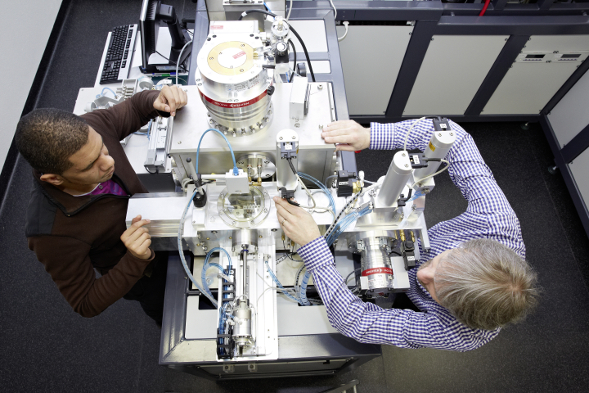Radiocarbon
Radiocarbon (14C) is a radioactive isotope of carbon with a half-life of 5730 years. It is formed in the upper stratosphere through the interaction of high-energy cosmic particles and nitrogen atoms from the air. The 14C is distributed in the troposphere as radioactive carbon dioxide and is taken up by plants during photosynthesis, or deposited in bodies of water through the precipitation of carbonates. From then on, the 14C diminishes continuously through the process of radioactive decay. By comparing the amount of 14C present in a sample today with the original amount, it is possible to determine how long ago the radiocarbon was taken up, and thus how old the material under investigation is. Archaeological samples can be dated in this way as well as environmental archives for climate research.

Using accelerator mass spectrometry (AMS), we measure 14C in relation to the stable 12C and 13C carbon atoms and on this basis determine the radiocarbon age of the sample. This result is then used to ascertain the calendar age of the sample by plotting it against the international 14C calibration curve. With this method, materials with an age of between 300 and about 55,000 years can be dated. By employing the radiocarbon excess from above-ground nuclear bomb explosions, it is also possible to date samples from the last 60 years.
